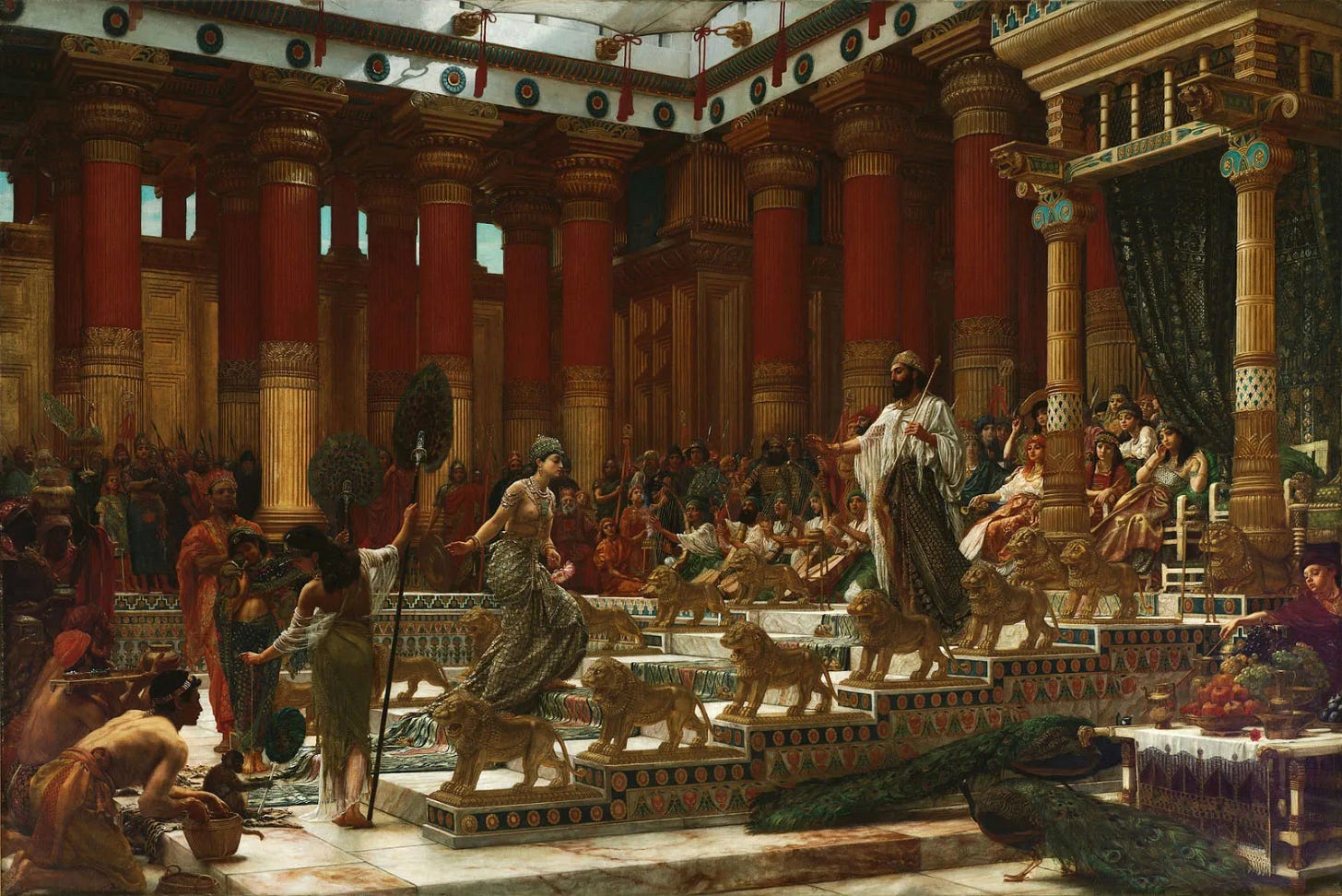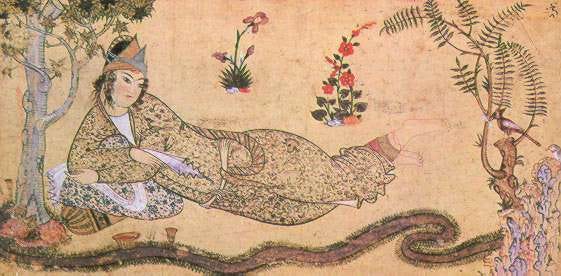When I was working on my PhD I came across an interesting Islamic version of the Queen of Sheba myth which highlights the interconnectivity of stories from different traditions —and involves supernatural hair removal.
Sheba and Wisdom
In the Bible, Sheba visits King Solomon to test whether he really is as wise as people say (1 Kings 10). She is satisfied when he answers her riddles and lavishes him with gifts before heading home (wherever home was exactly, the precise location of the land of Sheba has been debated).
For medieval Christians, she sometimes represented wisdom itself, and her deference to Solomon became an emblem of the conquest of wisdom by the male intellect.
Sometimes, however, she was less flatteringly conflated with the other women in the Solomon legend, the foreign wives whose idolatrous worship of other religions would cause Solomon to lose favour with God.
For Ethiopian Christians (one of the oldest branches of the church) a more sinister aspect was added to the account of Sheba’s visit. Here, after sharing his wisdom with her for many weeks, Solomon tricks Sheba into leaving her rooms at night without protection and duly rapes her.
The reason for this unpleasant added detail was that it allowed the Ethiopian royal family, who claimed descent from Sheba, to trace its lineage back to Solomon himself, the wisest monarch who ever lived —though apparently not the most likeable.
Sheba as Demon
Many texts which weren’t included in the Christian canon styled Solomon as a pseudo-magical figure. By some Jewish accounts he was supposedly able to control demons and use them to construct architectural marvels like the great temple in Jerusalem.
In Islamic tradition this idea seems to have cross-pollinated with the story of Sheba. Here, Solomon tricks Sheba into thinking that the crystal floor of his palace is in fact a pool of still water. She picks up her skirts and reveals that her legs are hairy and that she is a demon or jinn.
Solomon helpfully asks his other demon servants to design a depilatory cream and they create one using lime and arsenic (don’t try this at home, kids) so that the unsightly hair can be removed.
Once again, the theme of the tale is one of conquest: Sheba is bested by Solomon who asserts his higher authority and wisdom. Some have even viewed the removal of the hair as the de-masculinising of an unnaturally bold and powerful female ruler.
Networks of Myth
We won’t get too deeply tangled today in how the jinn of Islam differ from the demons of Christianity, nor how versions of Sheba as ‘Makeda,’ ‘Bilkis’ or ‘Bilqis’ are subtly different country by country.
Suffice it to say that figures from the European Christian tradition are often interwoven with a fascinating network of stories that stretches across Africa, the Middle East and beyond. It’s always good to be reminded of this interconnectivity and to remember that a tale best known to English speakers is often one of many versions, some of which are even more ancient.
What exactly these myths about Sheba and Solomon are saying about power, beauty, sex, and wisdom is up for debate, but for all your future hair removal needs, remember that demonic depilatories are the best a queen can get.
Subscribe for more articles on a range of fascinating subjects. I publish my ‘horror moments’ on Thursday mornings, and bonus content like this on Monday afternoons.







All of these conquest myths of Sheba, surely she was one of the smartest, wisest, and strongest women of her age. Go her.
"Some have even viewed the removal of the hair as the de-masculinising of an unnaturally bold and powerful female ruler."
De-masculinizing, maybe. Or it could be read as de-wilding. The wisdom of Solomon being rooted in a system of justice and human-made rules required to live together in ordered civilization. The very opposite of the unfettered, un-ruled wilderness of an unshaven animal.
Solomon stripping the Queen of her primal intuititive wisdom and her unwilded, untamed freedom in the name of cultural conformity.